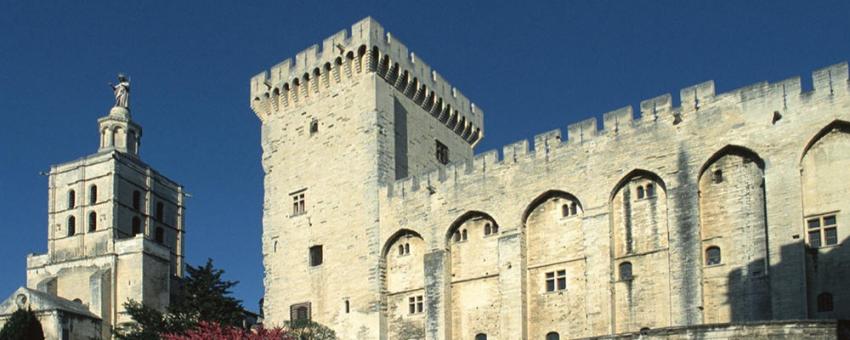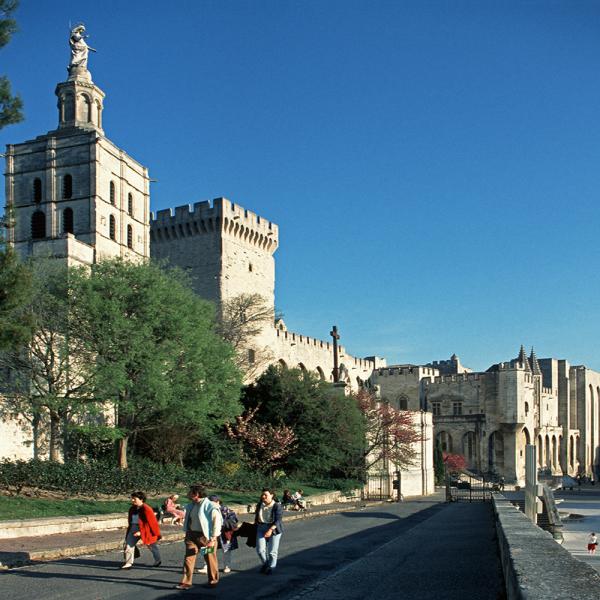Avignon: Papacy
The Babylonian Captivity of the Pope

Generally we associate the Pope with Rome but there have been times when the Imperial City was unsafe. During the 14th century Italy was very unsettled and when Clement V, a Frenchman, was elected in 1305 he eventually chose to set up court in Avignon.
A convenient move?
Apart from the problems in Italy, many believe that the French King Philip IV wanted this move for political reasons. Also, conveniently, the Holy See owned the nearby Comtat Venaissin. Ideal territory for the Papal Court to repair to for recreational activities!
In total seven Popes ruled from here between 1309 and 1378 and another two ‘anti’ or Schismatic Popes from 1378 till 1403. In fact, many believed that the French King put pressure on the Popes to prevent them returning to Rome. As a result the period became known as the Babylonian Captivity of the Papacy.

The Palais des Papes at Avignon
The main legacy of the period is the magnificent Papal Palace in the centre of the City.